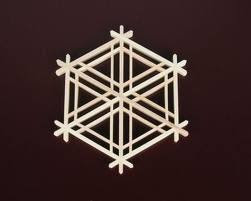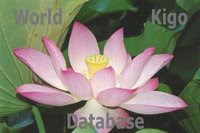:::::::::::::::::::::::::::::::::::::::::::::::::::::::::::::::::::::::::::::::::::::::::::::::::::::
Evening shower (yuudachi)
***** Location: Japan
***** Season: All Summer
***** Category: Heavens
*****************************
Explanation
There are many words in Japanese to express a sudden shower on a sunny summer day.
evening shower, sudden summer shower
(yuudachi 夕立) (yudachi ゆだち)
sudden shower, cloudburst (yodachi よだち)
white shower (haku-u 白雨)
clouds of an evening shower (yuudachi-gumo 夕立雲)
wind of an evening shower (夕立風)
after an evening shower (yuudachi go 夕立後)
fine weather after a sudden shower (yuudachi-bare 夕立晴)
Japonisme: The Influence of Japanese Prints on Western Art
http://www.bc.edu/bc_org/avp/cas/fnart/amico/images-disabled/japan/japonisme.html
In summer, there are often strong showers in the late afternoon or evening, sometimes accompanied by wind and thunder. Since they occur mostly later in the day, they are called "evening shower", "evening cloudburst". They last no longer than one hour and afterwards one feels refreshed and it is bright again.
They are formed by a certain weather pattern of upstream winds and regional low pressure systems. In the Kanto Area around Tokyo, in Yamanashi, Nagano and other provinces, they usually start around four in the afternoon and are gone by six. There people use the verbal form of "yuu tatsu 夕立つ". This is usually accompanied by wind, clouds and high waves, the air is blown up in the evening "yuugata ni ki ga tatsu: yuuki tatsu 夕気立つ", shortened to yuudachi.
The meaning of the verb TATSU 立つ in natural phenomenon means something that is seen clearly with your eyes, the kanji should be arawareru, 顕れる, to reveal itself. This word is also used for mist and fog, the moon, a rainbow and other natural phenomenon. This verb TATSU 顕つ, revealing of natural phenomenon, is usually used during the summer season.
The noun yuudachi 夕立 is used for the rain and the clouds that bring the rain. It is already used in the poetry collection of the Manyoo-Shu and others.
Gabi Greve
*****************************
Worldwide use
*****************************
Things found on the way
Weather words in Japanese.
降水用語
http://www.kishou.go.jp/know/yougo_hp/kousui.html
*****************************
HAIKU
- - - - - Kobayashi Issa 小林一茶 - - - - -
夕立のとりおとしたる小村哉
yuudachi no toriotoshitaru komura kana
the cloudburst
missed one
little village
This is a hokku from the 6th month (July) in 1822, when Issa was either living in his hometown or traveling around to villages in the vicinity, so the small village is probably one that Issa was visiting or that he heard about. It's possible to take the cloudburst as a needed source of water for a village, but the time of the poem is at the end or just after the end of the rainy season, so I take the cloudburst (as opposed to ordinary rain) to be something villages would probably like to avoid, since it could bring flooding and other damage from lightning and strong wind. In another hokku Issa mentions cleaning up his gate to get ready for an approaching cloudburst, and in the hokku following the one above in Issa's diary there seems to be water overflowing from a downpour or a flood in one village:
yamashimizu hito no yukiki ni nigorikeri
pure mountain water
muddied by so many people
walking through it
Tr. Chris Drake
My impression in the first hokku above is that there is a bit of irony in it. Issa might be wryly saying that the fierce storm hit every village in the area and overlooked or failed to hit only one little hamlet -- that is, it was a quite a storm. Or Issa might be expressing thanks for the one small omission the storm made.
Chris Drake
夕立や大肌ぬいで小盃
yuudachi ya oohadanuide ko-sakazuki
big cloudburst --
we strip to the waist
holding small sake cups
Tr. Chris Drake
This humorous summer hokku was written in the 6th month (July) of 1818, a month after Issa's baby girl Sato was born. Issa seems to have been in very high spirits at this time; and his evocation of Sato's death the next year is in Year of My Life. During the 6th month of 1818 Issa's wife, as was common, stayed with her baby at her mother's house in the next village, while Issa, after visiting his wife and daughter for a while, made many short trips, staying with his students in the area. It seems likely that he took part in quite a few sake-drinking celebrations during this time.
In the hokku, a sudden short, hard downpour is literally roaring down outside, giving an edge of excitement to the drinking party that's beginning. It's no doubt hot, so Issa and the others may have slipped off the top parts of their robes and sit stripped to the waist, though Issa may simply be using "strip to the waist" in its metaphorical sense, which is similar to "roll up your sleeves" in English. When there was heavy lifting to be done or a difficult task or job at hand, people would often speak of stripping to the waist and getting down to work with all their might. I take Issa to be using the phrase both literally and metaphorically. Perhaps Issa is beginning the drinking bout by noting how everyone has properly prepared for the major job that is about to commence by stripping down for action, and he reminds them that they'll have to work extremely hard with their small sake cups to be able to handle the large amount of sake they have to drink. The downpour outside suggests the sake will flow almost as freely as the rain.
In the next hokku in Issa's diary, the falling of the rain and the flowing of sake become aspects of each other:
yuudachi ya ima nisanbai nome-nome to
sudden downpour --
hey, come on, just two
or three more cups!
The to at the end of the third line indicates the second and third lines are reported speech. I take these two lines to be Issa's translation from rainese into Japanese of what he thinks the downpour is saying. The powerful sounds and force of the rain seem to be urging Issa and his companions to say things like, "Drink! Have a little more, just a little more!"
Soon after the second hokku above Issa suggests in the another hokku in his diary that the hard rain is inspiring not only humans but also animals:
yuudachi ni hyooshi o tsukeru tsubame kana
a swallow moves
to the rhythm
of the downpour
A swallow hears the hard rain as music, and its steps and body movements accompany the rain, accentuating its rhythm, which is perceptible through all the noise.
Chris Drake
- - - - -
夕立を見せびらかすや山の水
yuudachi o misebirakasu ya yama no mizu
mountain water
shows off
a sudden downpour
Tr. Chris Drake
This humorous hokku is a variant written in Issa's hand of a hokku from the 6th month (July) in 1821. A short but intense cloudburst on the afternoon of a hot summer day completely soaks the mountain, and everywhere rivulets, streams, and waterfalls fill and overflow as the water rushes and splashes down the slopes. Trying to imagine how the mountain water must feel, Issa suggests the water is very proud of being so plentiful and full of energy at the moment, and it enjoys showing off the magnificent gift of water it has just received by performing endless acts of amazing spouting and splashing and falling through the air both on the slopes and in the streambeds that extend out from the foot of the mountain.
The original hokku from Issa's diary in 1821 is equally humorous:
yuudachi o misebirakasu ya yama no kami
the mountain god
shows off
a cloudburst
A great many Japanese mountains were (and some still are) themselves regarded as gods -- as the divine bodies of the god of each mountain. Most mountain gods are believed to be female or sometimes a divine female-male couple, although the god of a mountain is often overlapped with the souls of ancestors from neighboring villages, so the "god" in the first line of the hokku may just as easily be "gods." For hunters and woodcutters, the mountain god is mainly a god of fertility who gives birth to and nurtures the plants and animals living on the mountain, but for farmers the mountain god is above all a god of water who supports and protects rice and other crops.
Like other nature gods in Japanese shamanic folk religion, mountain gods are not almighty and are enmeshed in a wide-ranging divine social fabric. The mountain god in the hokku tries to provide water and other sustenance to people and animals who live near her, but she can't control when the weather gods will decide to drop rain or snow on her slopes. In Issa's hokku the mountain god is extremely happy to receive the divine gift of a real cloudburst, and she feels proud of her ability to now help the local farmers. She's hardly modest, and she shows off for all to see her new abundance not only with streams rushing down her slopes but with water surging through the various streambeds below the mountain that pass through many villages nearby, in one of which Issa lives. No doubt the villagers are very grateful for the mountain god's equally prodigious love of showing off and of giving away everything she gets. Unless there is a flood, that is.
Chris Drake
. WKD : Yama no Kami 山の神 .
. Kobayashi Issa 小林一茶 Issa in Edo .
..........................................................................
夕立や枕にしたる貧乏樽
yuudachi ya makura ni shitaru bimboodaru
cloudburst--
using an old keg
for a pillow
Tr. David Lanoue
..........................................................................
あっさりと朝夕立のお茶屋哉
assari to asa yuudachi no ochaya kana
with a light touch
morning's cloudburst...
teashop
Tr. David Lanoue
..........................................................................

夕立や舟から見たる京の山
yuudachi ya fune kara mita Kyoo no yama
cloudburst--
watching from a boat
Kyoto's mountain
Tr. David Lanoue
Haiga by Sakuo Nakamura
http://blog.livedoor.jp/sakuo3903/archives/12999737.html
Here is an evening shower in Kyoto,
woodblock from Hiroshige
http://www.asahi-jc.com/woodblck.htm
:::::::::::::::::::::::::::::::::::::::::::::::::::::::::::::::::::::::::::::::::::::::::::::::::::::::::::::::::
夕立や草葉をつかむむら雀 / 夕立ちや
yuudachi ya kusaba o tsukamu murasuzume
(1776)
sudden shower -
clinging to blades of grass,
the village-sparrows
Tr. Haldane
An evening shower--
Clutching unto the blades of grass
Village sparrows.
Tr. Nelson/Saito
An evening shower!
Holding onto the bushes,
a flock of sparrows.
Tr. Sawa/ Shiffert
An evening cloudburst
sparrows cling desperately
to trembling bushes
Tr. ?
. Yosa Buson 与謝蕪村 in Edo .
:::::::::::::::::::::::::::::::::::::::::::::::::::::::::::::::::::::::::::::::::::::::::::::::::::::::::::::::::
evening rain—
I braid my hair
into the dark
Penny Harter
http://www.millikin.edu/haiku/writerprofiles/PennyHarter.html
xxxxxxxxxxxxxxxxxxxxxxxxxxxxx
Sommerwiese, spröd, hart
Zu kurz der Abendregen
Es bleibt die Hoffnung
summerlawn, so hard
evening shower too short
hope remains
S.Albert - 2000
http://www.webmoment.at/albert/webMoment/Sprache/Sommer.htm
*****************************
Related words
***** .. .. .. .. Rain in various KIGO
.SAIJIKI ... HEAVEN
Kigo for Summer
[ . BACK to WORLDKIGO . TOP . ]
:::::::::::::::::::::::::::::::::::::::::::::::::::::::::::::::::::::::::::::::::::::::::::::::::::::



















































